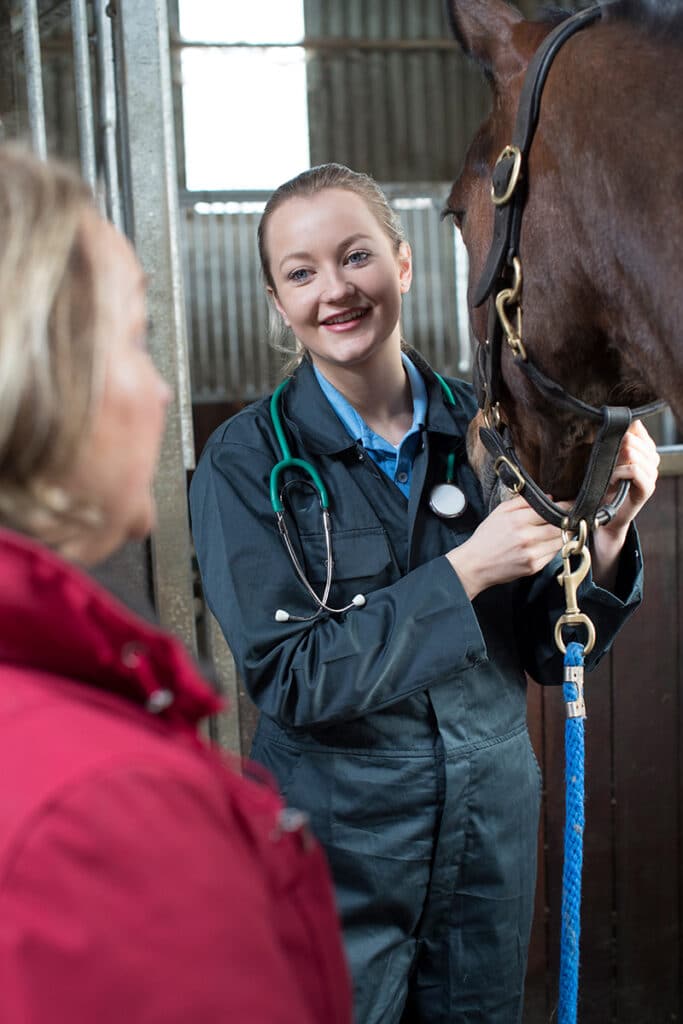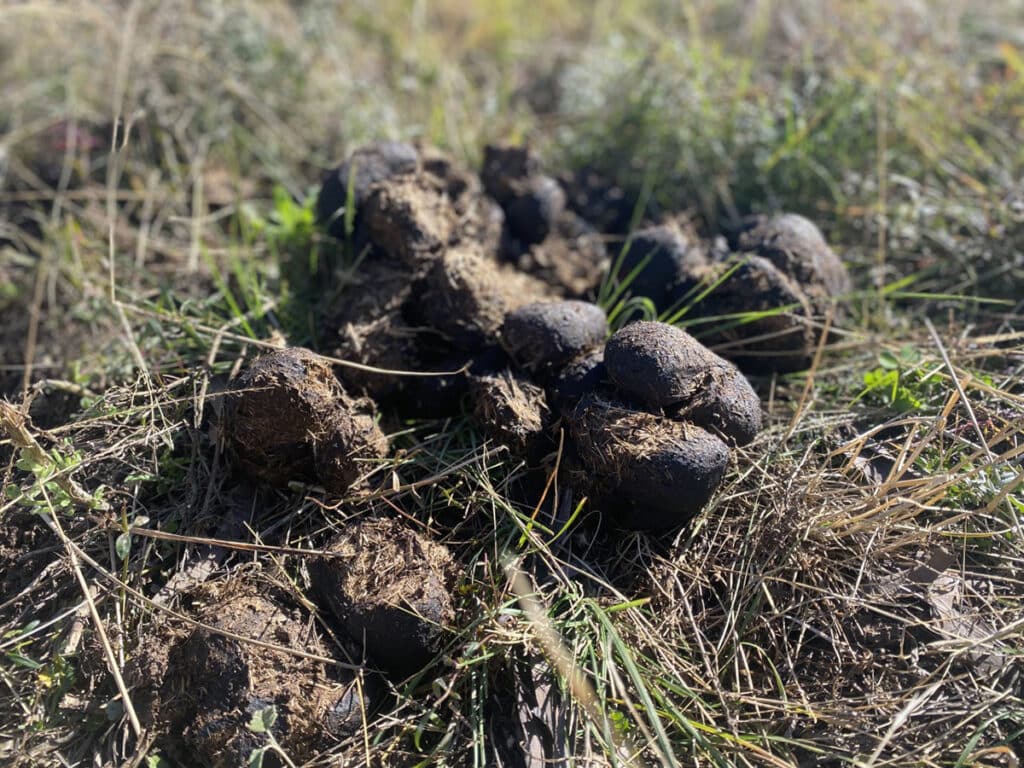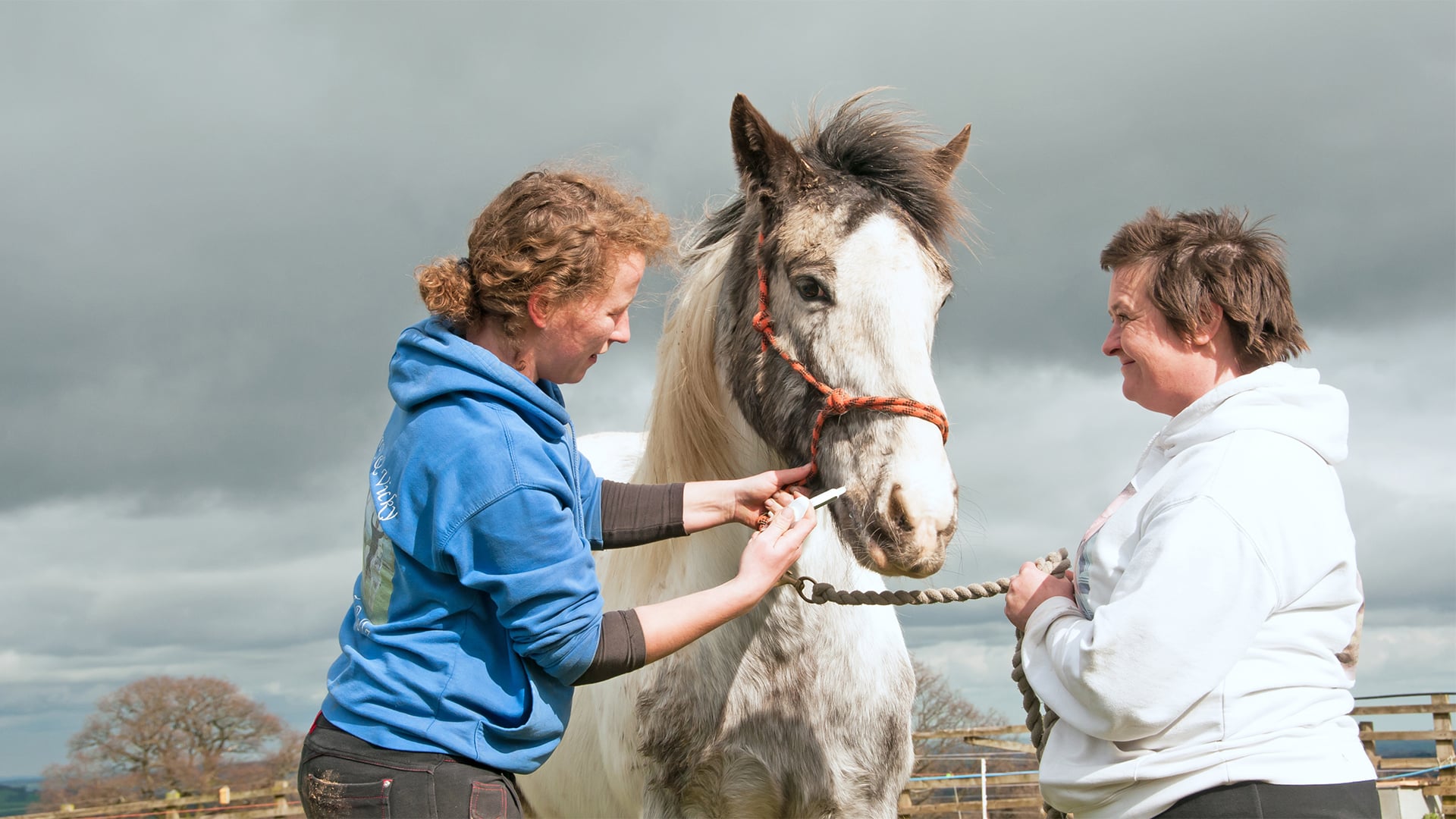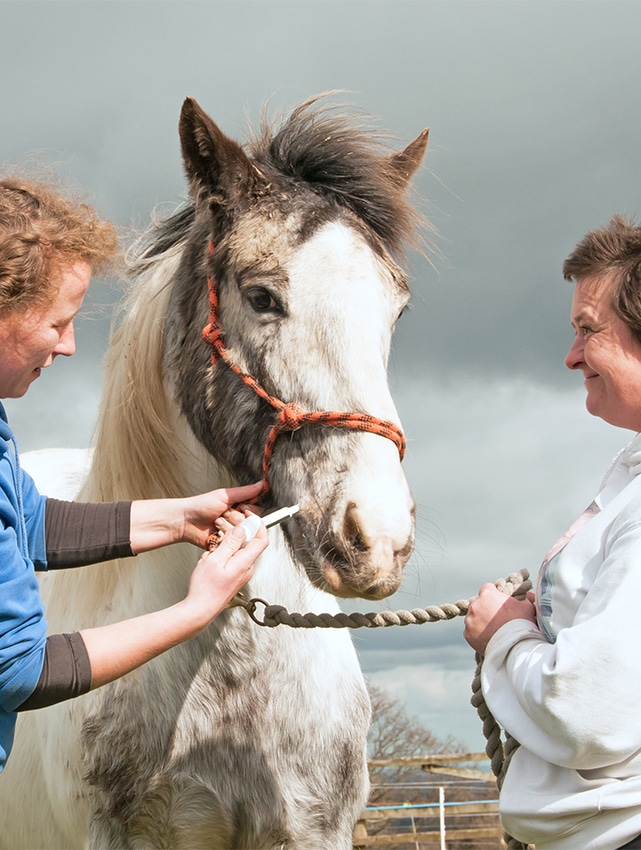Europe’s prescription-only worming model highlights the urgent need for smarter parasite control. With resistance rising and no new drug classes coming, Australia’s horse owners are urged to adopt diagnostic-led, evidence-based strategies to protect long-term wormer effectiveness.
Since 2022, European Union regulations have required a veterinary prescription to purchase wormers – a rule introduced to combat the global rise of parasite resistance. The change reflects growing international concern about how overuse and misuses of worming products are driving resistance, leaving fewer effective treatment options for horses and livestock.

In Europe, a vet prescription is required for horse wormers.
“Whilst there appears to be
a huge choice of wormers, there
are only five main classes…”
WHY EUROPE CHANGED ITS WORMING RULES
Whilst there appears to be a huge choice of wormers, there are only five main classes of wormers in existence: Benzimidazoles, Ivermectin/Moxidectin, Pyrantel salts, Praziquantel and Piperazine. Each is sold under a range of trade names, but the underlying chemistry has remained largely unchanged for nearly 60 years. With no new classes of wormers on the horizon, the rise in resistance is a major concern for veterinarians, scientists and farmers alike.
Investigation in Europe found that routine, calendar-based worming programs – treating horses automatically two times a year with major change of season – were both ineffective and wasteful. Studies suggested that up to 40% of worming treatments were unnecessary, often given to horses with little or no parasite burden. This unnecessary overuse contributes directly to the development of resistant worm populations, making it harder to control parasites in the long term.
In response, European countries adopted a prescription-only approach with Denmark being the first country to do so in 1999 and Ireland being the last in 2022. This means that wormers can now only be purchased with veterinary approval following a confirmed diagnosis of worms in the horse or livestock. This model encourages a diagnostic-first strategy using faecal egg counts (FECs) and veterinary advice to determine if and when treatment is actually needed.
This shift is designed to promote responsible parasite control, preserve the effectiveness of existing drugs, and support better overall herd health. As European vets have observed, the regulation has also prompted more informed discussions between veterinarians and owners about pasture management, horse health, and resistance prevention.

A faecal egg count (FEC) on manure is an effective way to ascertain whether a horse has a worm burden.
UNDERSTANDING WORM RESISTANCE
Worm resistance develops when parasites survive a normal dose of a wormer and pass that tolerance on to the next generation. Over time, the population of susceptible worms declines, and resistant worms dominate – eventually rendering that class of wormer ineffective.
The issue is not confined to any one country or type of horse. Resistance in small strongyles (the most common equine internal parasite) is now widespread internationally, while roundworms in foals have shown increasing tolerance to ivermectin and moxidectin. Once resistance has appeared on a property, it is permanent; there is no known way to reverse it.
Factors that accelerate resistance include:
- Frequency or unnecessary worming without diagnostic testing.
- Under-dosing, often caused by underestimating a horse’s weight or sharing tubes.
- Using the same wormer repeatedly without rotation between drug classes.
- Poor pasture hygiene, which increases reinfection pressure.
SMARTER WORMING PRACTICES FOR AUSTRALIA
Australia’s climate and grazing systems mean worm control can’t rely on chemical treatments alone. The most effective programs combine diagnostic testing, targeted treatment, and good pasture management.
Test before you treat
Faecal egg count (FEC) testing is the cornerstone of modern parasite management. A simple manure sample reveals whether a horse is carrying a significant worm burden and helps identify high shedders – horses that contribute most to pasture contamination.
In many European countries, and FEC is required before a vet can issue a prescription wormer. While Australia doesn’t have the same requirement, owners are encouraged to adopt this approach voluntarily.
Rotate wisely – and by class, not brand
Many horse owners believe switching brands is enough to prevent resistance, but the important factor is rotating active ingredients, not trade names. The five main classes each target worms differently, so alternating between them (when tests show it’s appropriate) helps reduce selective pressure.
However, rotation should be done strategically, not simply on a calendar schedule. Wormers should not only be used when tests indicate they’re needed.
Accurate dosing matters
Always dose for the heaviest horse in the group and use a weight tape or scale to estimate accurately. Underdosing allows some worms to survive the exposure to the chemical, which promotes resistance. It’s better to slightly overdose than underdose within the product’s safety margin.

Good pasture mangement is the cornerstone of parasite management.
MANAGING WORMS BEYOND THE TUBE
Reducing reliance on chemical wormers starts with better pasture management. Breaking the worm life cycle on the paddock is one of the most effective tools owners have.
Regular manure removal, ideally every two to three days in warmer months. This can drastically reduce parasite eggs before they mature into ineffective larvae.
Harrowing can be useful in hot, dry weather to expose larvae to sunlight, but should be avoided in mild or damp conditions, which help larvae spread.
Resting paddocks for several months or cross-grazing with cattle or sheep can also reduce reinfection rates, as most equine parasites are host-specific.
A SEASONAL PERSPECTIVE
Spring and autumn are key times to review your worming plan. In spring, encysted small strongyles begin to emerge from the intestinal wall after winter dormancy, potentially causing inflammation or colic.
Dr Tweedie noted that encysted larvae can remain in the intestinal wall for up to two years, making targeted treatment and good pasture hygiene essential. He recommends consulting a vet about the most effective product for this stage, as not all wormers treat encysted larvae.
THE TAKEAWAY
Europe’s prescription-only approach has been in place for several years now – and while Australia remains more relaxed, the science behind the policy is difficult to ignore. With no new wormer classes on the horizon, the only sustainable path forward is diagnostic-led, evidence-based parasite control.
Testing before treating, dosing accurately, and managing pastures effectively are simple steps every horse owner can take to protect both their horses and the future of effective worming. EQ






